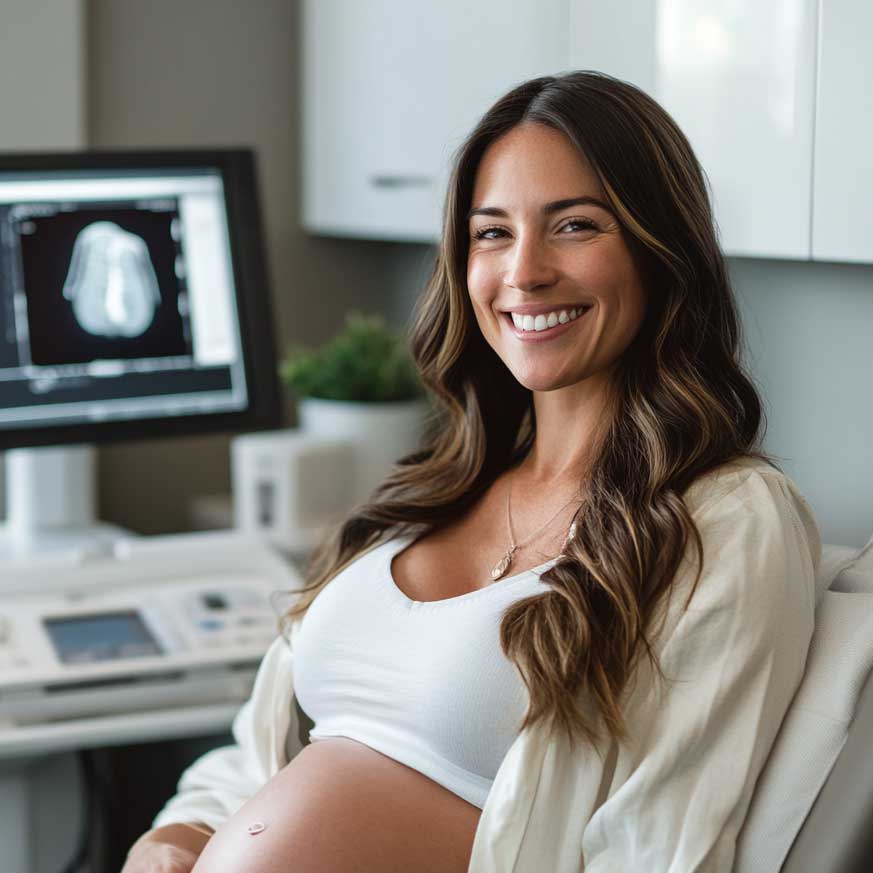Detailed Anatomy Scan
The second-trimester morphology ultrasound is performed between 20 and 22 weeks of pregnancy and is one of the most important ultrasounds during pregnancy. At this stage, the baby is already more developed, allowing for a more detailed analysis of growth and well-being.

How is the Second Trimester Ultrasound Performed?
The ultrasound is performed non-invasively using a transabdominal scan. The procedure is quick, painless, and safe for both mother and baby. The exam duration may vary depending on the baby’s position and the need for detailed measurements.
Why is this Ultrasound Important?
The second-trimester morphology ultrasound is essential to ensure the baby is developing correctly. It enables the early detection of potential problems and helps monitor the baby’s growth, ensuring appropriate care during pregnancy.
Benefits of the Second Trimester Ultrasound
- Detection of Structural Anomalies: The morphology ultrasound can identify any structural abnormalities in the baby, helping to detect congenital malformations.
- Monitoring Baby’s Growth: Evaluates the baby’s growth, ensuring healthy development.
- Reassurance for Parents: Offers a detailed view of the baby, providing parents with a sense of security about their baby’s well-being.
What is Evaluated in the Second Trimester Ultrasound?
Baby’s Morphological Development:
Examines the development of the baby’s major organs and structures, including the brain, heart, kidneys, liver, stomach, bones, and limbs.
Placenta Check:
Assesses the placenta’s position and function, as well as checks for issues such as placenta previa.
Amniotic Fluid Quantity:
Ensures there is an adequate amount of amniotic fluid, essential for the baby’s development.
Baby’s Gender:
In many cases, the baby’s gender can be identified, provided the baby is in a favorable position.
Baby Measurements:
Measurements such as femur length, abdominal circumference, and head diameter are taken to assess the baby’s growth and confirm it aligns with the gestational age standards.


